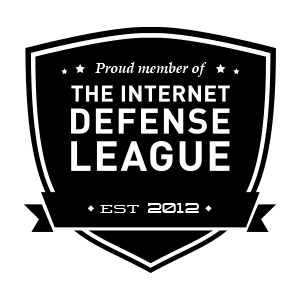
I get a lot of queries from my clients, as well as some of the seniors with which I volunteer, about why accounts pop up with their names or their friends’ and family’s names on them. There is a lot of uncertainty about what to do in these cases, I think mostly because for those who came from a more in-person, etiquette-oriented age, it seems incongruous and rude to block a name that belongs to one of your associates- even if it is misspelled.
First, I can commend general fraud education for having disseminated the idea that any account- whether it has a name like your friend’s or not- that looks odd, should not be engaged. Even those newest to the social media experience have an awareness that, sadly, someone else can impersonate them or their family and pals. It is true- if it looks odd, don’t go near it.
That having been said, for those a bit unfamiliar with the world of web pages, profiles and drop down menus, a person who encounters a spam/faked account doesn’t necessarily know what to do next.
Here’s a breakdown on what a fake account is:
These accounts are created by hackers who have managed to get your Facebook, google or other login data like your name or password. They then use this to make a fake account much like you, but of course not you. From this, they hope to go all Trojan Horse on your friends and gain access to their accounts when your associates friend or respond to them, thinking it is you.
Thus the cycle of hacking perpetuates…
By clicking a link, an email or a message which purports to be from a real company like Facebook, Google, Microsoft etc, the hackers re-route you to a false password entry JavaScript window, where they gather your data. Imagine an enterprising thief could put up a second door to your shed, with a similar padlock to your own, and wait in the bushes for you to enter your combination… Seems like a lot of work to those in real life, and yes, it would be. But virtual doors are easy to obtain in the land of computers, and give great scads of details about you, and so once behind a console or laden with tablet in hand, you run the risk of opening fake shed padlocks if you do not verify the emails and messages and links you receive are correct.
How to verify? Check for spelling errors, email addresses that are not from companies (if dealing with businesses like The Bay, Home Depot or the local bank) or are similarly messed up in syntax. Never click just in case- your friends can get in touch with you through other means.
Now that I’ve reinforced the “just don’t touch it” rule, one must take positive steps to report fake accounts, which does require some clicking. Here’s how to do it on Facebook:
If responding to a fake friend request, go to their page. This won’t link you to them, not until you accept or make a friend request. We are just window shopping here- specifically, looking at culprits behind one way mirror glass in a police line up. Click on the options for the individual, such as in the picture below:

Go to report/block and unfriend, and follow the prompts. I like to unfriend first, so our ties are severed, then go back to menu and report and block. Facebook will ask you the reason you reported the profile, and you can pick option from a drop down menu like, “it is pretending to be another person or me” or “it is fake”.
That’s all you have to do- Facebook does the rest! You are protected from the faker, and if you send a message to your friends warning them, and they follow these directions, they will be safe from them, too.
For people who don’t use Facebook often, they might see the old friend request far after you have reported the spammer. If they click on the notification- such as this fake account wants to be friends- they will most likely see the page has been taken down. It looks something along this line:

If not, they should follow the above directions to report and block the profile.
Facebook usually acts quickly to remove spam pages which impersonate others; Google also is brutally quick.
By keeping an eye out for errors in messages, emails and links, one can help protect oneself from Spam… but it does happen! Follow this unfriend, report and block guide to keep yourself safe online!
